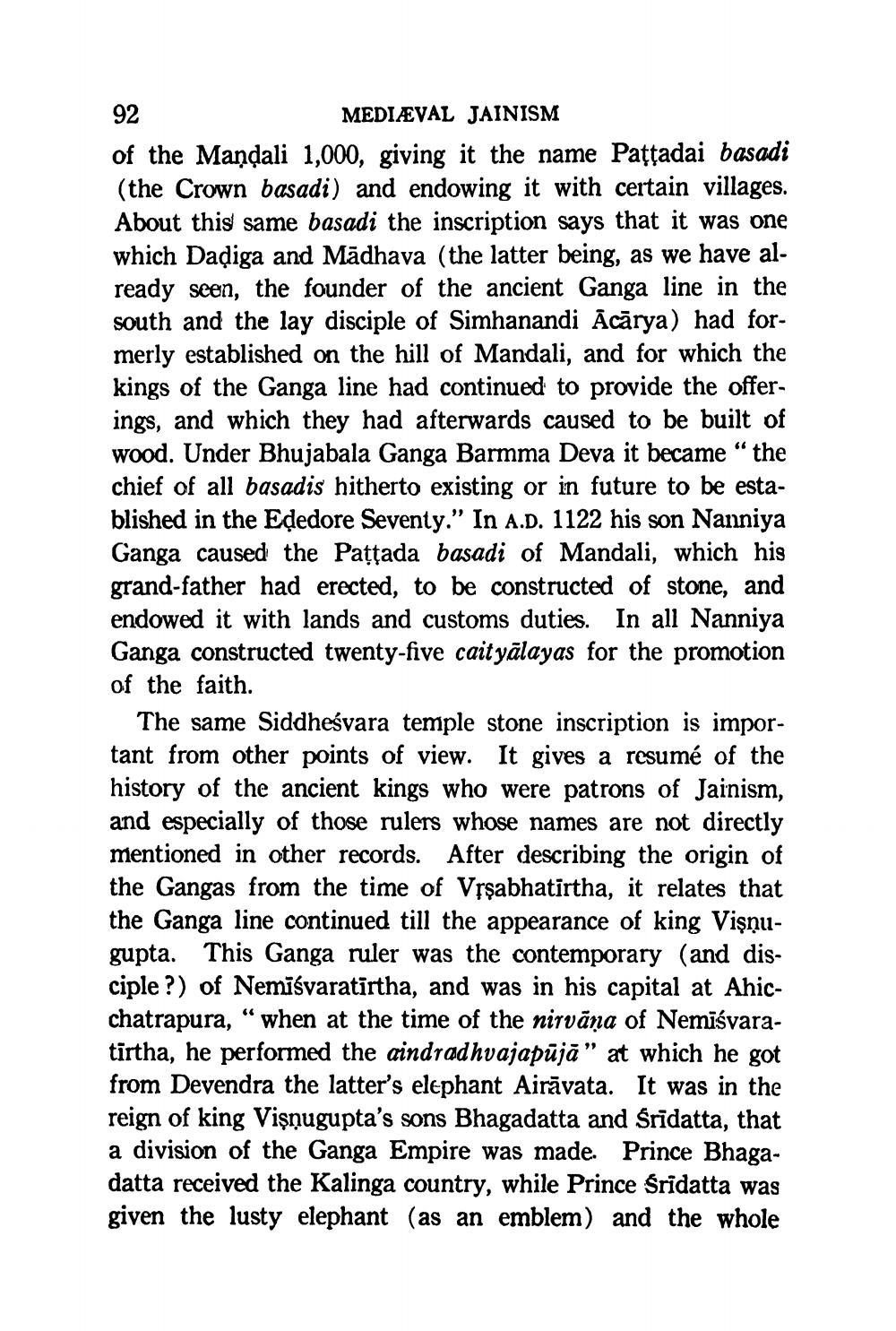________________
92
MEDIEVAL JAINISM
of the Mandali 1,000, giving it the name Paṭṭadai basadi (the Crown basadi) and endowing with certain villages. About this same basadi the inscription says that it was one which Dadiga and Madhava (the latter being, as we have already seen, the founder of the ancient Ganga line in the south and the lay disciple of Simhanandi Acārya) had formerly established on the hill of Mandali, and for which the kings of the Ganga line had continued to provide the offerings, and which they had afterwards caused to be built of wood. Under Bhujabala Ganga Barmma Deva it became "the chief of all basadis hitherto existing or in future to be established in the Eḍedore Seventy." In A.D. 1122 his son Nanniya Ganga caused the Pattada basadi of Mandali, which his grand-father had erected, to be constructed of stone, and endowed it with lands and customs duties. In all Nanniya Ganga constructed twenty-five caityalayas for the promotion of the faith.
The same Siddheśvara temple stone inscription is important from other points of view. It gives a resumé of the history of the ancient kings who were patrons of Jainism, and especially of those rulers whose names are not directly mentioned in other records. After describing the origin of the Gangas from the time of Vṛşabhatirtha, it relates that the Ganga line continued till the appearance of king Visņugupta. This Ganga ruler was the contemporary (and disciple?) of Nemiśvaratirtha, and was in his capital at Ahicchatrapura, "when at the time of the nirvana of Nemiśvaratirtha, he performed the aindradhvajapūjā" at which he got from Devendra the latter's elephant Airavata. It was in the reign of king Visnugupta's sons Bhagadatta and Śrīdatta, that a division of the Ganga Empire was made. Prince Bhagadatta received the Kalinga country, while Prince Śrīdatta was given the lusty elephant (as an emblem) and the whole




